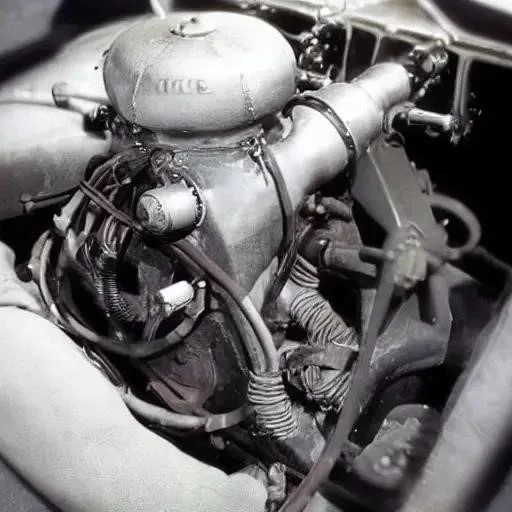Imagine this: you’re merging onto the highway, pressing the accelerator with a hopeful surge, only to find your vehicle—a trusted companion on countless journeys—stubbornly refusing to exceed 3000 revolutions per minute. This isn’t just a minor inconvenience; it’s a heart-stopping moment of mechanical protest, a frustrating dilemma for any driver. This sudden and severe power restriction, often referred to as “limp mode,” is your car’s sophisticated yet stern way of telling you that something is critically amiss under the hood, a protective measure designed to prevent catastrophic damage.
Far from being a sign of terminal failure, this limitation is a testament to the remarkable intelligence engineered into modern automobiles. Your car’s Engine Control Unit (ECU), acting as its vigilant brain, has detected a parameter outside of its safe operating thresholds. Rather than allowing continued operation that could lead to costly repairs or even a complete engine breakdown, it deliberately restricts power, limiting engine speed and often gear selection. Understanding the root cause of this protective shutdown is the first crucial step toward restoring your vehicle’s full potential and ensuring its longevity on the road.
Key Information: Understanding the 3000 RPM Limit
| Category | Information |
|---|---|
| Problem Description | Engine’s inability to exceed approximately 3000 RPM, often accompanied by reduced power and acceleration. This is commonly known as “limp mode” or “fail-safe mode.” |
| Primary Cause | The Engine Control Unit (ECU) detecting a critical fault that could lead to engine or transmission damage if full power is maintained. The ECU intentionally restricts performance as a protective measure. |
| Common Fault Areas |
|
| Immediate Action | Safely pull over, turn off the engine, wait a few minutes, and restart. If the problem persists, avoid high speeds and seek professional diagnostic help immediately. Use an OBD-II scanner if available to read diagnostic trouble codes (DTCs). |
| Reference Link | AutoZone Repair Guides & Articles (General automotive diagnostic resource) |
The Digital Guardian: How Your ECU Detects Trouble
At the heart of this perplexing issue lies your car’s ECU, a sophisticated microcomputer constantly monitoring hundreds of data points. From the air entering the engine, precisely measured by the Mass Air Flow (MAF) sensor, to the oxygen content in the exhaust, scrutinized by O2 sensors, every parameter is meticulously tracked. When any of these vital inputs fall outside the acceptable range, a red flag is raised. For instance, a failing MAF sensor might misreport the volume of incoming air, leading the ECU to believe the engine is running dangerously lean or rich, thereby engaging limp mode to prevent potential piston or valve damage. Similarly, a clogged catalytic converter, a crucial component for emissions control, can create excessive back pressure, suffocating the engine and triggering the protective limit to avert overheating and further catalyst damage.
Industry veterans, like seasoned automotive engineer Dr. Evelyn Reed, often emphasize the preventative nature of these systems. “The 3000 RPM limit isn’t a punitive measure,” Dr. Reed explains, “it’s a sophisticated guardian. It’s the car’s way of saying, ‘I’ve detected a significant anomaly, and to protect myself from further harm, I must restrict my functions until a proper diagnosis and repair can be made.’ Ignoring these warnings can transform a relatively simple fix into a much more expensive and complex repair.” This perspective underscores the critical importance of heeding these digital warnings.
Unraveling the Mystery: Common Culprits and Expert Diagnostics
Digging deeper, the list of potential culprits for a rev limit is surprisingly diverse, yet often points to core systems. Fuel delivery, for example, is paramount. A partially clogged fuel filter or a weakening fuel pump can starve the engine of the necessary fuel, causing misfires and an inability to build power. The ECU, sensing this critical deficiency, will swiftly engage limp mode, preventing engine knock and damage from a lean fuel mixture. By meticulously analyzing diagnostic trouble codes (DTCs) stored in the ECU, skilled technicians can often pinpoint the problematic system with remarkable precision.
Beyond sensors and fuel, issues within the ignition system, such as failing spark plugs or ignition coils, can also contribute, though they typically manifest as more general misfires before a hard RPM limit. Vacuum leaks, often subtle and insidious, can introduce unmetered air into the engine, throwing off the air-fuel ratio and confusing the ECU. Each of these components plays a crucial role in the symphony of combustion, and any discord can trigger the ECU’s protective response. Modern diagnostic tools, capable of real-time data streaming, empower technicians to observe these subtle fluctuations, offering invaluable insights into the engine’s internal health.
The Road Ahead: Solutions and Proactive Maintenance
The good news is that for most cases, the 3000 RPM limit is a solvable problem, not a death knell for your vehicle. The diagnostic process typically begins with an OBD-II scanner to retrieve any stored trouble codes. These codes are invaluable clues, guiding technicians toward the specific system or component that has malfunctioned. Once identified, whether it’s replacing a faulty sensor, clearing a clogged fuel line, or addressing an exhaust blockage, the repair often restores full engine performance. Crucially, a professional diagnosis ensures that the underlying cause is addressed, rather than merely treating the symptoms.
Looking forward, the automotive industry is continually advancing its diagnostic capabilities. The integration of AI-driven predictive maintenance systems promises a future where potential issues are identified even before they trigger a limp mode event. These intelligent systems, analyzing vast datasets from vehicle sensors, can anticipate component failures, allowing for proactive repairs rather than reactive ones. Ultimately, understanding your vehicle’s signals, engaging in regular, diligent maintenance, and seeking expert assistance when anomalies arise are your best defenses against unwelcome surprises like the frustrating 3000 RPM barrier. By embracing these practices, you ensure your car remains a reliable, high-performing partner on every journey, ready to conquer any road ahead.






